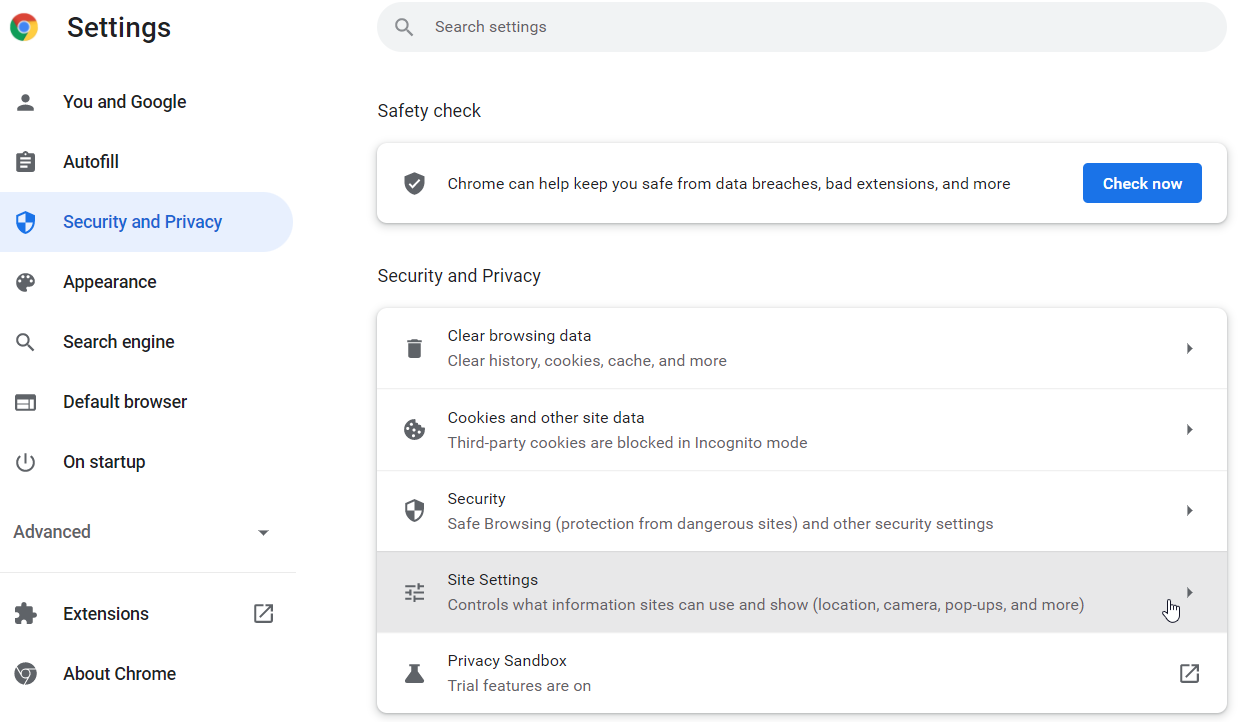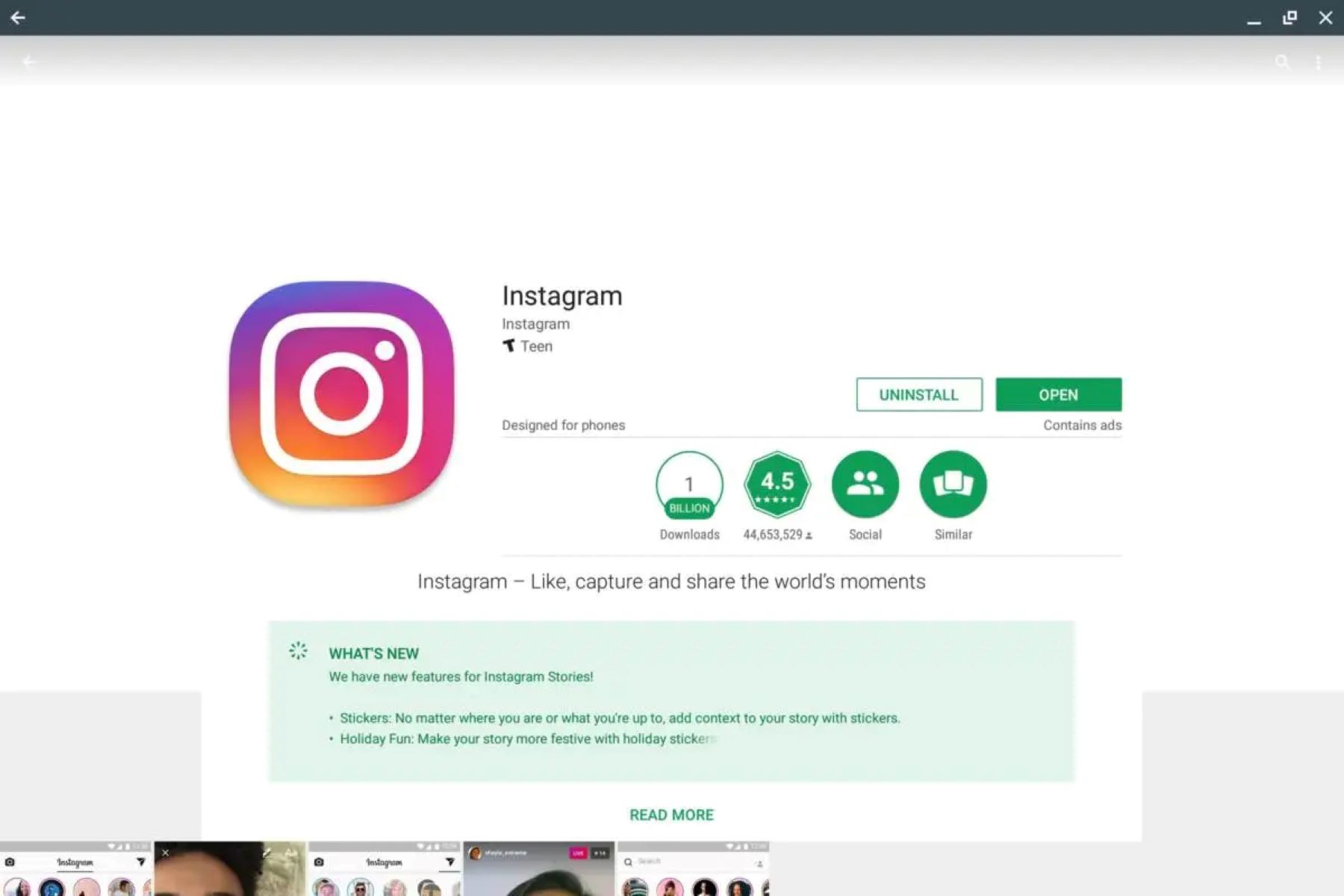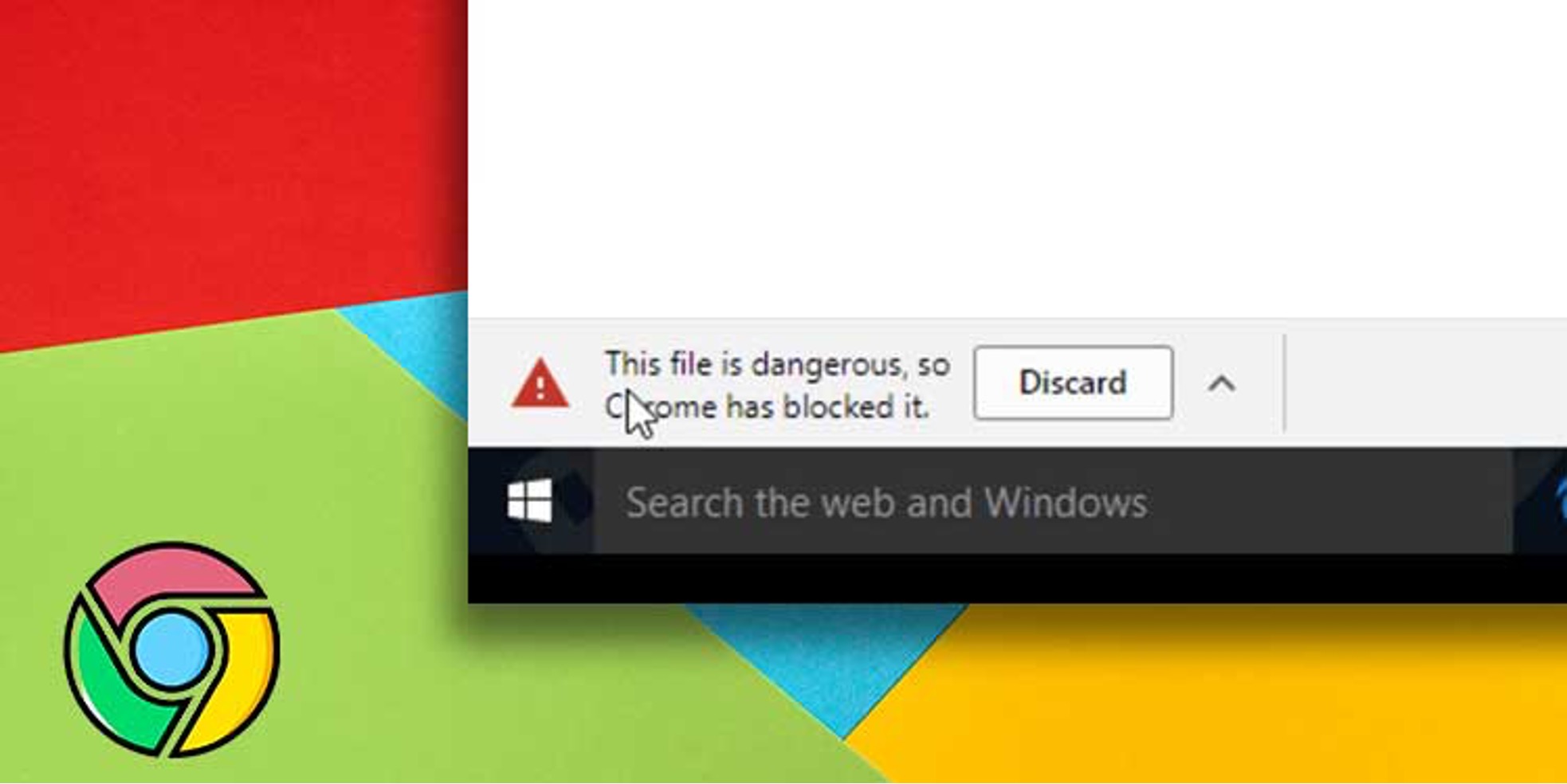Introduction
When trying to download files from the internet, you may encounter a situation where Google Chrome blocks the download. This can be frustrating, especially when you know the file is safe and necessary for your work or personal use. Fortunately, there are several methods you can try to prevent Chrome from blocking your downloads.
In this article, we will guide you through various steps you can take to bypass Chrome’s download blocking feature. We’ll explore options like clearing browser data, disabling safe browsing, changing Chrome settings, and more. By following these steps, you should be able to successfully download files without any interruptions.
Before we delve into the solutions, it’s important to note that Chrome’s download blocking feature is designed to protect users from potentially harmful or malicious files. It acts as a security measure to prevent users from inadvertently downloading files that may harm their computer or compromise their privacy. However, if you trust the source of the file and are confident in its safety, you can take the necessary steps to override Chrome’s restrictions.
Now, let’s take a closer look at the methods you can use to get Chrome to stop blocking your downloads.
Clearing Browser Data
One of the first steps you can take to resolve issues with Chrome blocking downloads is to clear your browser data. Over time, your browser accumulates cookies, cached files, and browsing history, which can sometimes interfere with the download process. Follow these steps to clear your browser data:
- Open Google Chrome and click on the three-dot menu icon at the top-right corner of the browser window.
- Select “Settings” from the dropdown menu to access the Chrome settings page.
- Scroll down and click on “Privacy and security” in the left-hand sidebar.
- Under the “Privacy and security” section, click on “Clear browsing data.”
- A dialog box will appear with options to select the type of data you want to clear. Make sure the checkboxes for “Browsing history,” “Cookies and other site data,” and “Cached images and files” are selected.
- Choose the time range for which you want to clear the data. If you’re unsure, select “All time” to remove all your browsing data.
- Click on the “Clear data” button to initiate the data clearing process.
Once the process is complete, restart Chrome and try downloading the file again. Clearing your browser data helps remove any stored information that might be conflicting with the download process, allowing Chrome to function without interruption.
If clearing the browser data doesn’t resolve the download blocking issue, don’t worry. There are still other troubleshooting steps you can follow to overcome this obstacle.
Disabling Safe Browsing
Chrome’s Safe Browsing feature is designed to protect you from potentially harmful websites and downloads. However, in some cases, it may block legitimate downloads as well. Disabling Safe Browsing temporarily can help you bypass the download blocking issue. Here’s how you can do it:
- Open Google Chrome and click on the three-dot menu icon at the top-right corner of the browser window.
- Select “Settings” from the dropdown menu to access the Chrome settings page.
- Scroll down and click on “Privacy and security” in the left-hand sidebar.
- Under the “Security” section, locate the “Safe Browsing” option.
- Click on the “Safe Browsing” option to expand the settings.
- Choose either “Standard protection” or “Enhanced protection.” If you want to disable Safe Browsing completely, select “No protection.”
Keep in mind that disabling Safe Browsing removes an important security feature from your browser and may expose you to potential risks. Only disable it temporarily if you trust the source of the file you are trying to download.
After disabling Safe Browsing, restart Chrome and attempt to download the file again. If the download is successful, you can re-enable Safe Browsing once you have finished downloading the file.
If disabling Safe Browsing doesn’t resolve the issue, there are still other methods you can try to stop Chrome from blocking your downloads.
Changing Chrome Settings
If clearing browser data and disabling Safe Browsing haven’t resolved the issue of Chrome blocking your downloads, another step you can take is to modify certain Chrome settings that may be interfering with the download process.
Follow these steps to change Chrome settings:
- Open Google Chrome and click on the three-dot menu icon at the top-right corner of the browser window.
- Select “Settings” from the dropdown menu to access the Chrome settings page.
- Scroll down and click on “Privacy and security” in the left-hand sidebar.
- Under the “Privacy and security” section, click on “Site settings.”
- Find the “Additional content settings” option and click on it.
- Look for the “Automatic downloads” section and click on it.
- Toggle the switch next to “Ask when a site tries to download files automatically” to enable it.
By enabling the “Ask when a site tries to download files automatically” option, Chrome will prompt you to allow or block downloads from websites on a case-by-case basis. This allows you to override the default blocking behavior and manually approve the downloads you trust.
After changing these settings, restart Chrome and try downloading the file again. You should now receive a prompt asking for your permission to download. Grant the necessary permissions and proceed with the download.
If changing Chrome settings doesn’t resolve the download blocking issue, there are still other troubleshooting steps you can explore.
Disabling Antivirus Software
Antivirus software plays a crucial role in protecting your computer from malware and other security threats. However, in certain cases, it can also interfere with the download process and cause Chrome to block the files you’re trying to download. Temporarily disabling your antivirus software can help you determine if it’s the cause of the issue. Here’s how you can do it:
- Locate the antivirus software icon in your system tray or taskbar.
- Right-click on the icon to access the menu.
- Look for an option such as “Disable” or “Turn off” and select it.
- Confirm any prompts or warnings that may appear to disable the software.
Keep in mind that disabling your antivirus software exposes your computer to potential risks. Only disable it temporarily and make sure to re-enable it once you have finished downloading the file.
After disabling the antivirus software, restart Chrome and try downloading the file again. If the download is successful, it may indicate that your antivirus software was indeed causing the download blocking issue. In such cases, you may need to configure your antivirus software to allow downloads or consider using a different antivirus program.
If disabling the antivirus software doesn’t resolve the issue, there are still other methods you can try to get Chrome to stop blocking your downloads.
Adding Exceptions to Chrome’s Safe Browsing List
If you encounter frequent issues with Chrome blocking downloads from specific websites that you trust, you can add them as exceptions to Chrome’s Safe Browsing list. Adding exceptions allows Chrome to recognize these websites as safe and allows downloads without interference. Here’s how you can add exceptions:
- Open Google Chrome and click on the three-dot menu icon at the top-right corner of the browser window.
- Select “Settings” from the dropdown menu to access the Chrome settings page.
- Scroll down and click on “Privacy and security” in the left-hand sidebar.
- Under the “Security” section, locate the “Safe Browsing” option.
- Click on the “Safe Browsing” option to expand the settings.
- Click on “Manage exceptions” to open the Safe Browsing exceptions page.
- In the “Add a site” section, enter the URL of the website you want to add as an exception.
- Select “Add” to add the website to the exceptions list.
After adding the website as an exception, Chrome will no longer block downloads from that particular website. This allows you to download files without any interruptions while maintaining the safety provided by Chrome’s Safe Browsing feature for other websites.
It’s important to note that adding exceptions should only be done for websites that you trust and are confident about their safety. Exercise caution when adding exceptions and regularly review the websites listed in the exceptions list to ensure they are still trustworthy.
If adding exceptions doesn’t resolve the download blocking issue or you don’t want to manage exceptions manually, there are other methods you can try to bypass Chrome’s download restrictions.
Using a Different Browser
If you’ve tried the previous methods mentioned but are still unable to download files in Chrome due to blocking issues, an alternative solution is to use a different web browser. There are several other browsers available that might not have the same download restrictions as Chrome. Here are a few popular options:
- Firefox: Mozilla Firefox is a widely used browser known for its flexibility and customization options. It offers a similar user experience to Chrome and provides a range of add-ons and extensions to enhance your browsing experience.
- Microsoft Edge: Microsoft Edge is the default browser for Windows 10 and is known for its speed and security features. It offers a smooth browsing experience and seamless integration with other Microsoft services.
- Safari: Safari is the default browser for Apple devices and is optimized for macOS and iOS. It offers a clean and intuitive interface and is known for its efficient performance and privacy features.
- Opera: Opera is a feature-rich browser that focuses on speed and security. It offers a range of built-in tools, such as ad-blocking and a free VPN, to enhance your browsing experience.
By using an alternative browser, you may be able to download files without encountering the same blocking issues you experienced in Chrome. Simply install the browser of your choice and navigate to the website from which you need to download the file.
It’s worth noting that switching browsers should be considered as a temporary solution, and it’s recommended to troubleshoot and resolve the issue in Chrome if possible, as it remains one of the most popular and widely used browsers.
Now that you’re aware of the alternative options, give a different browser a try and see if it allows you to download the files you need without any interruptions.
Conclusion
Encountering issues with Chrome blocking downloads can be frustrating, especially when you know the files are safe and necessary. However, there are several steps you can take to overcome this obstacle. In this article, we explored various methods to get Chrome to stop blocking your downloads.
We started by suggesting the option of clearing your browser data, which can help remove any stored information that may interfere with the download process. Next, we recommended disabling Safe Browsing temporarily to allow downloads from trusted sources. Additionally, changing Chrome settings and adding exceptions to Chrome’s Safe Browsing list can also help bypass the download blocking feature.
If the issue persists, we recommended temporarily disabling your antivirus software to determine if it’s causing the interference. Lastly, we mentioned the alternative solution of using a different browser, which may have fewer download restrictions compared to Chrome.
It’s important to remember that these methods should be used with caution and discretion. Chrome’s download blocking feature is designed to protect users from potential threats, so it’s always advisable to exercise caution when downloading files from unfamiliar sources.
We hope that by following these steps, you’ll be able to successfully download the files you need without any interruptions. If the problem persists or if you have further concerns, it may be worthwhile to seek additional technical support or reach out to the Chrome support team for further assistance.
Remember, the key is to find a balance between convenience and security when it comes to downloading files, ensuring that your online experience remains safe and hassle-free.

























